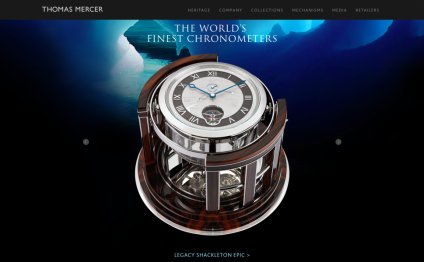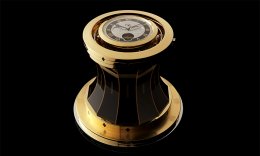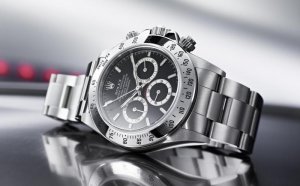
Mercer Chronometers
 Historically, marine chronometers were used in coordination with astronomical or celestial navigation to determine longitude. For obvious reasons pendulum clocks did not work at sea and until the mid-1750s, it was difficult for ships to navigate out of sight of land. The sun’s angle at noon clued the shipmaster on latitude, but it was impossible to calculate longitude. The first successful chronometer, invented by John Harrison in 1737, was a major technological breakthrough. Harrison and others continued to improve the design and accuracy of their chronometers in a quest to perfect a precision instrument, impervious to motion or variations in temperature, humidity or air pressure. The marine chronometer revolutionized navigation and, today, a chronometer can accurately measure the time of a fixed location, for example Greenwich Mean Time.
Historically, marine chronometers were used in coordination with astronomical or celestial navigation to determine longitude. For obvious reasons pendulum clocks did not work at sea and until the mid-1750s, it was difficult for ships to navigate out of sight of land. The sun’s angle at noon clued the shipmaster on latitude, but it was impossible to calculate longitude. The first successful chronometer, invented by John Harrison in 1737, was a major technological breakthrough. Harrison and others continued to improve the design and accuracy of their chronometers in a quest to perfect a precision instrument, impervious to motion or variations in temperature, humidity or air pressure. The marine chronometer revolutionized navigation and, today, a chronometer can accurately measure the time of a fixed location, for example Greenwich Mean Time.
One of the craftsmen who paved the way for our modern chronometer is Thomas Mercer. Born in 1822 in St. Helens, Lancashire—at the heart of British watch-making territory—Mercer began working a young age alongside his grandfather, a movement maker. He went on to make chronometers with the eminent John Fletcher, before starting his own clock and chronometer company in 1858 with the goal of creating the world’s finest and most reliable marine chronometer.
Mercer chronometers rose to fame, especially after playing a central role in Sir Ernest Shackleton’s 1914 ill-fated Antarctica expedition aboard the ship Endurance. After the expedition’s ship was trapped and crushed by ice, Shackleton and his crew had to find their way out on an open boat during a 22-month ordeal. Shackleton’s used his Mercer chronometer to navigate across the Weddell Sea. Everyone survived, and Shackleton’s chronometer is now on display at the National Maritime Museum in Greenwich.
At the Monaco Yacht Show in September, Thomas Mercer revisited its history. In conjunction with Andrew Winch Design, the 130-year-old company launched the stunning Thomas Mercer “Classis” clock. Classis (Latin for fleet) makes reference to the history of navigation’s most important voyages of discovery.
Asked to design a case for the new generation chronometer, famed yacht designer Andrew Winch didn’t have to look far for inspiration. At a press conference at the Hotel de Paris where the chronometer was unveiled, Winch pointed to the logo on his shirt—a simple rendering of a winch. Double entendre aside, the winch-shaped ebony and makassar body, crafted by renowned British furniture maker David Linley, is an integral part of this exquisite blend of high-design and craftsmanship.
Thomas Mercer’s CEO, Alessandro Quintivalle, slipped on white gloves before picking up the clock and gently rotating it to reveal its mechanisms front and back. A hush fell on the audience, allowing the quiet ticking to sound through the room. Quintivalle went on to reveal a few of the clock’s hidden treasures, including the winding key located inside a drawer inset in an ebony panel. The expedition theme is obvious on the winch encasement’s face, which is engraved with 12 historically important ships and the dates of their respective voyages. The chronometer, made of brass, ebony, satinwood, stainless, crystal, gold plating and 17 jewels, would grace the salon of any superyacht. Its gimbaled suspension is designed to allow the movement to remain horizontal regardless of wave motion.
RELATED VIDEO



Share this Post
Related posts
Rolex Oyster Perpetual Superlative Chronometer Cosmograph
Ref. 16519, White Gold Cosmograph Daytona Rolex, “Oyster Perpetual, Superlative Chronometer, Officially Certified, Cosmograph…
Read MoreTime Keeping devices
If youve ever been to Rome, or seen pictures of this magnificent city, then youll have seen one of the many obelisks that…
Read More










